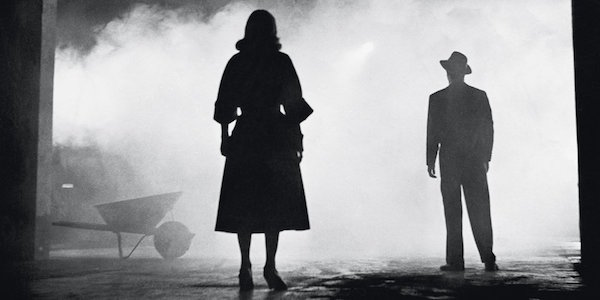In the previous chapter, we covered the camera. This chapter of the How to Analyse Movies series will focus on lighting, sound and score!
Lighting
Lighting is used in film to create a certain mood, or an atmosphere. You may not expect it, but even lighting can add to and create meaning in a film.
Horror movies, for instance, are known to frequently use lighting to set the tone and mood. The use of shadows is especially important in horror as it adds to the atmosphere and all-round feel of the film. They are codes – already by the amounts of shadow used in a film you can pinpoint what genre the film is. You will never see horror-type lighting in a romantic movie, as it doesn’t fit the setting, unless it’s for comedic effect.
[membership level=”0″]
Sorry! This article is part of our Premium Content. Please subscribe to unlock our fantastic HOW TO ANALYSE MOVIES series, and thousands of other terrific articles! Go here to become a member. It’s just $25 per year.
OR, buy Film Analysis For Beginners: How To Analyse Movies
Film Analysis For Beginners: How To Analyse Movies
[/membership] [membership level=”3,5,6″]
In lighting, available light suggests natural light. Spotlight, although mostly used in theatre, picks out one member of a group, but is sometimes used more subtly in film, and could be used as foreshadowing. Full-face lighting highlights a face and can suggest openness and honesty. Shadow and low contrast are often associated with fear, anger, suspicion, et cetera.
High-key lighting is harsh and bright, and can uplift the movie’s mood. It can also intensify a scene where emotions are laid bare, as the high-key lighting makes it look as if the person cannot hide anything, especially when they also make use of full-face lighting.

Soft-key lighting is, as the name implies, a much softer light, shadows are visible and contrast is lower. It’s often used to create a romantic atmosphere, or to set a grimmer mood in darker movies. Watch this fascinating lighting tutorial if you’re interested in learning more about lighting – video tutorials are very handy to get a deeper understanding of what it is the filmmakers do and how they achieve it (and why!).
Sound and Diegesis
There is a difference between sound that is in the scene when shot, and the sound that is added after the movie is shot. The former is called the sound of “the world of the film”, or diegesis. Examples are singing birds or cars driving by in the background, the sound of a baby’s rattle toy when the baby rattles it, or the hum of people talking in a café. Those sounds are diegetic.
Not diegetic are sounds that are added to a film after the film is shot to create mood and atmosphere, like the sounds of blowing wind, rumbling thunder or blows in a fist fight. Sound can also be dubbed. That means the sound is already there in diegesis but is replaced by a clearer recording of the sound, to emphasize on and exaggerate the effect of the sound.
The Score
Never forget to consider the score. The music used in a film, whether composed specifically for it or pre-existing, goes a great length to set the mood. Upbeat pop songs will be used during a montage in a comedy or high school drama, metal may be used during an epic medieval battlefield scene, and horrors will be scored with screeching violins (thank you, Psycho).
Horrors will rarely feature romantic ballads, though they may sometimes have a very cheerful song, contrasting with what’s happening on screen – either for comedic effect or to cause certain discordancy in the watcher’s emotions. There are many ways music can be used to elicit emotions from the audience.
Blade Runner, for instance, is a dark and mysterious movie, set in a very dark, dystopian world. The score created by Vangelis emphasized on that mood, even giving it a dream and trance-like feel, adding to the mystery and surrealism of the film. Scores enhance the mood and atmosphere of a scene, and can be as powerful as the film itself; John Williams’ Imperial March is so famous that many people who haven’t even seen Star Wars will recognise it.
The same counts for the famous whistle tune of The Good, The Bad and The Ugly, composed by Ennio Morricone, who set the norm for what a Western film score is supposed to sound like. And hearing Clint Mansell’s highly recognisable score for Requiem for a Dream can still give you goose bumps, as it elicits memories of the film’s darkest moments.
Very often, filmmakers will use existing music to score their film. This, for instance, was done very successfully in one of the scenes in The Matrix Reloaded, which used Juno Reactor’s Mona Lisa Overdrive during the famous freeway chase to emphasise on the thrill of the chase.
Do you ever pay special attention to sound and lighting when you’re watching a movie? What is your favourite score?
If you have any questions or comments, please post them below!
[/membership]
Next in How To Analyse Movies:
Currently you’re on part 5: Lighting, Sound & Score
Part 1: Introduction
Part 2: Signs, Codes & Conventions
Part 3: Mise-en-Scene & Editing
Part 4: Considering the Camera
Part 6: Story & Genre
Part 7: Iconography & Realisticness
Part 8: Putting it into Practice
Does content like this matter to you?
Become a Member and support film journalism. Unlock access to all of Film Inquiry`s great articles. Join a community of like-minded readers who are passionate about cinema - get access to our private members Network, give back to independent filmmakers, and more.